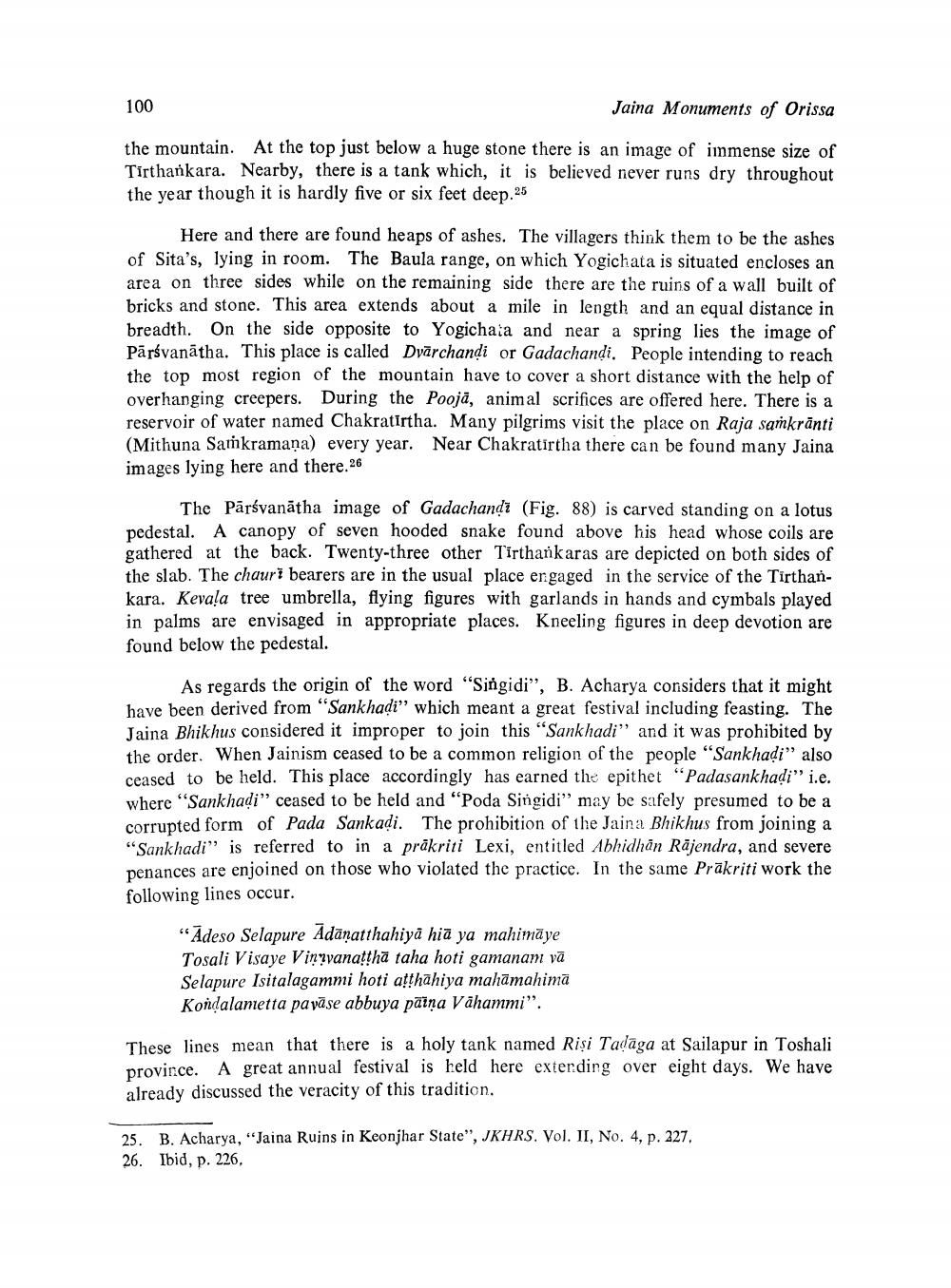________________
100
Jaina Monuments of Orissa
the mountain. At the top just below a huge stone there is an image of immense size of Tirthankara. Nearby, there is a tank which, it is believed never runs dry throughout the year though it is hardly five or six feet deep.25
Here and there are found heaps of ashes. The villagers think them to be the ashes of Sita's, lying in room. The Baula range, on which Yogichata is situated encloses an area on three sides while on the remaining side there are the ruins of a wall built of bricks and stone. This area extends about a mile in length and an equal distance in breadth. On the side opposite to Yogichata and near a spring lies the image of Pärsvanatha. This place is called Darchandi or Gadachand. People intending to reach the top most region of the mountain have to cover a short distance with the help of overhanging creepers. During the Pooja, animal scrifices are offered here. There is a reservoir of water named Chakratirtha. Many pilgrims visit the place on Raja samkrānti (Mithuna Samkramana) every year. Near Chakratirtha there can be found many Jaina images lying here and there.
The Parsvanatha image of Gadachandt (Fig. 88) is carved standing on a lotus pedestal. A canopy of seven hooded snake found above his head whose coils are gathered at the back. Twenty-three other Tirthankaras are depicted on both sides of the slab. The chauri bearers are in the usual place engaged in the service of the Tirthankara. Kevala tree umbrella, flying figures with garlands in hands and cymbals played in palms are envisaged in appropriate places. Kneeling figures in deep devotion are found below the pedestal.
As regards the origin of the word "Singidi", B. Acharya considers that it might have been derived from "Sankhadi" which meant a great festival including feasting. The Jaina Bhikhus considered it improper to join this "Sankhadi" and it was prohibited by the order. When Jainism ceased to be a common religion of the people "Sankhadi" also ceased to be held. This place accordingly has earned the epithet "Padasankhadi" i.c. where "Sankhadi" ceased to be held and "Poda Singidi" may be safely presumed to be a corrupted form of Pada Sankadi. The prohibition of the Jaina Bhikhus from joining a "Sankhadi" is referred to in a prakriti Lexi, entitled Abhidhan Rajendra, and severe penances are enjoined on those who violated the practice. In the same Prakriti work the following lines occur.
"Adeso Selapure Adāṇatthahiyā hia ya mahimaye Tosali Visaye Virvana!!ha taha hoti gamanam vä Selapure Isitalagammi hoti aṭṭhahiya mahāmahima Kondalametta payase abbuya päṇa Vahammi".
These lines mean that there is a holy tank named Rişi Tadaga at Sailapur in Toshali province. A great annual festival is held here extending over eight days. We have already discussed the veracity of this tradition.
25. B. Acharya, "Jaina Ruins in Keonjhar State", JKHRS. Vol. II, No. 4, p. 227. 26. Ibid, p. 226,




